If you’re a farmer relying on the hard-working John Deere 5075e, you might encounter some challenges along the way. Let’s delve into the common John Deere 5075e problems faced by users of this tractor model and provide simple, step-by-step solutions to keep your farming experience smooth and efficient.
8 Major John Deere 5075e problems
Now we are going to discuss the most common problems of John Deere 5075e along with their easy solutions.
1. John Deere 5075e Starting Problems:
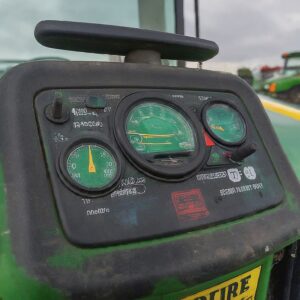
Some farmers have reported difficulties starting their John Deere 5075e. It also happens due to the low quantity of oil in the tank. Some owner also faces this problem with John Deere 5065e.
Potential Causes:
- Battery Issues: One of the common reasons for starting problems is a weak or dead battery. The battery might not have enough power to crank the engine, especially in colder weather.
- Fuel Problems: Another possibility is issues with the fuel system. It could be due to contaminated fuel, air in the fuel lines, or a clogged fuel filter preventing proper fuel flow to the engine.
- Ignition System Faults: Problems with the ignition system, such as faulty spark plugs, ignition coils, or a malfunctioning ignition switch, can also cause starting difficulties.
- Starter Motor Troubles: If the starter motor is worn out or malfunctioning, it may struggle to turn the engine over, leading to starting issues.
Troubleshooting Steps:
- Check the Battery: Begin by inspecting the battery for any signs of corrosion or damage. Ensure that the connections are tight and clean. If the battery is old or not working well, think about getting a new one.
- Inspect the Fuel System: Verify that there is an adequate supply of clean fuel in the tank. Check for any fuel leaks or clogs in the fuel lines and ensure that the fuel filter is clean. Bleed the fuel system if air is suspected to be trapped.
- Examine the Ignition System: Test the spark plugs to ensure they are sparking correctly. Inspect the ignition coils and wiring for any signs of damage. If necessary, replace any faulty components.
- Test the Starter Motor: If all else seems fine, the issue might lie with the starter motor. Test it to see if it’s functioning correctly. If it’s not working or making strange sounds, it might need fixing or replacing.
- Consult the Manual: Refer to the John Deere 5075E operator’s manual for specific troubleshooting steps and maintenance procedures recommended by the manufacturer.
By following these steps, you can easily get rid of John Deere 5075e Starter Problems.
2. John Deere 5075e Transmission Problems
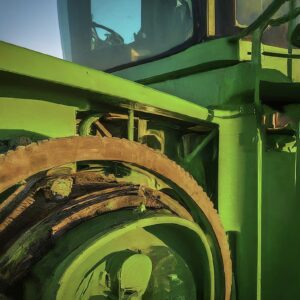
Users may face issues with the tractor’s transmission, such as unusual noises or difficulties shifting gears. This is the most common John Deere 5075e problem that owners face. Here are several problems that occur with transmission.
1. Shifting Difficulties:
One of the primary concerns users may need help shifting gears. This can manifest as resistance when trying to move from one gear to another or when gears slip unexpectedly.
- Causes: Shifting difficulties can arise for various reasons such as low transmission fluid levels, clutch problems, or issues with the transmission synchronizer.
- Solutions: To address this problem, users should first check the transmission fluid levels and top up if necessary. If the fluid levels are adequate, the clutch system should be inspected for wear and tear, and the transmission synchronizer may require adjustment or replacement by a qualified technician.
2. Gear Slippage:
Gear slippage occurs when the transmission fails to hold the selected gear, causing the tractor to unexpectedly shift gears or lose power.
- Causes: Gear slippage can be caused by worn-out clutch plates, hydraulic system malfunctions, or improper adjustment of the clutch linkage.
- Solutions: Users should inspect the clutch plates for signs of wear and replace them if necessary. Additionally, checking the hydraulic system for leaks or malfunctions is essential. Proper adjustment of the clutch linkage can also help prevent gear slippage.
3. Noisy Transmission:
Unusual noises emanating from the transmission, such as grinding or whining sounds, can indicate underlying issues that need attention.
- Causes: Noisy transmission can be attributed to worn-out gears, bearings, or lack of lubrication.
- Solutions: Regular maintenance, including checking and replacing worn-out components, can help mitigate noisy transmission issues. Ensuring proper lubrication of moving parts is also crucial in preventing premature wear and tear.
4. Transmission Overheating:
Overheating of the transmission can lead to accelerated wear of components and eventual failure if not addressed promptly.
- Causes: Transmission overheating can occur due to inadequate cooling, low fluid levels, or excessive load on the tractor.
- Solutions: Users should ensure proper ventilation around the transmission to facilitate cooling. Checking and replenishing transmission fluid levels regularly can prevent overheating. Additionally, avoiding excessive loads on the tractor can help reduce the risk of overheating.
3. John Deere 5075e Hydraulic Problems:
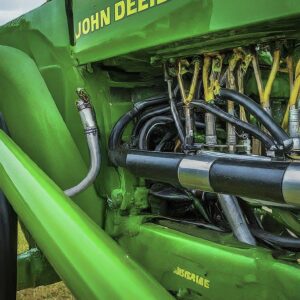
Issues like slow hydraulic response or unresponsive controls can occur.
- Low Hydraulic Fluid Level: One of the most common issues is low hydraulic fluid level. If your tractor’s hydraulics aren’t working properly, it could be due to insufficient hydraulic fluid. Check the fluid level in the reservoir and add more if needed. Be sure to use the recommended hydraulic fluid type for your tractor.
- Hydraulic Leaks: Leaks in the hydraulic system can also cause problems. Inspect the hoses, connectors, and seals for any signs of leakage. Even small leaks can lead to a loss of hydraulic pressure and performance issues. Replace any damaged components and tighten connections to prevent further leaks.
- Clogged Hydraulic Filters: Another culprit for hydraulic problems is clogged filters. Hydraulic filters can become clogged over time with dirt, debris, and other contaminants, restricting the flow of fluid. Regularly check and replace the hydraulic filters according to the manufacturer’s recommendations to ensure proper flow and prevent damage to the hydraulic system.
- Faulty Hydraulic Pump: If you’re experiencing weak or inconsistent hydraulic performance, it could indicate a problem with the hydraulic pump. The pump may be worn out or damaged, resulting in inadequate fluid pressure. Consult with a qualified technician to diagnose the issue and replace the pump if necessary.
- Air in the Hydraulic System: Air bubbles trapped in the hydraulic fluid can also cause issues. Bleed the hydraulic system to remove any air pockets and ensure smooth operation. Follow the proper bleeding procedure outlined in the tractor’s manual to eliminate air from the system effectively.
- Overheating: Overheating of the hydraulic system can occur due to excessive use or inadequate cooling. Check for proper airflow around the hydraulic components and ensure that the cooling system is functioning correctly. Avoid prolonged heavy-duty operations to prevent overheating and potential damage to the hydraulic system.
- Electrical Problems: In some cases, hydraulic issues may be related to electrical problems such as faulty sensors or wiring issues. Inspect the electrical connections and components associated with the hydraulic system, and troubleshoot any issues accordingly.
4. Cooling System Concerns:
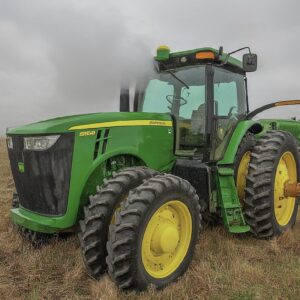
The cooling system of the John Deere 5075e plays a crucial role in maintaining the engine’s operating temperature within an optimal range. Overheating can lead to reduced engine efficiency, increased wear and tear, and potential damage if left unaddressed. Several factors can contribute to cooling system concerns, including:
- Coolant Leaks: Leaks in the coolant system can result from damaged hoses, loose connections, or faulty seals. These leaks can lead to a loss of coolant fluid, causing the engine to overheat.
- Clogged Radiator: The radiator’s function is to dissipate heat from the coolant fluid. However, over time, dust, debris, and sediment can accumulate, obstructing airflow and reducing the radiator’s efficiency in cooling the engine.
- Malfunctioning Thermostat: The thermostat regulates coolant flow through the engine by opening and closing as needed. A malfunctioning thermostat can either remain closed, causing overheating or fail to close, leading to prolonged engine warm-up times.
- Fan Belt Issues: The fan belt drives the radiator fan, which helps draw air through the radiator to cool the coolant fluid. If the fan belt is loose, worn, or damaged, it may not spin the fan at the required speed, resulting in inadequate cooling.
Addressing Cooling System Concerns:
To mitigate cooling system concerns and ensure the optimal performance of the John Deere 5075e, several preventive measures and troubleshooting steps can be undertaken:
- Regular Maintenance: Implementing a routine maintenance schedule is crucial for detecting and addressing cooling system issues early. This includes inspecting hoses, seals, and connections for signs of leaks, checking the radiator for obstructions, and ensuring the thermostat and fan belt are functioning correctly.
- Flushing and Refilling Coolant: Periodically flushing the coolant system helps remove accumulated debris and contaminants, ensuring proper coolant flow and heat transfer. Additionally, topping up coolant levels as needed maintains the system’s efficiency in dissipating heat.
- Radiator Cleaning: Cleaning the radiator fins and core with compressed air or a soft brush removes dirt and debris that hinder airflow. This simple maintenance task enhances the radiator’s cooling capacity, preventing overheating issues.
- Thermostat Replacement: If the thermostat is suspected to be faulty, replacing it with a new one can restore proper coolant flow and temperature regulation within the engine.
- Fan Belt Inspection: Regularly inspecting the fan belt for signs of wear, tension, or damage and replacing it as necessary ensures the radiator fan operates effectively in cooling the engine.
5. John Deere 5075e Electrical Problems
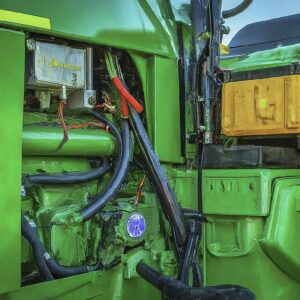
When facing electrical problems with your John Deere 5075e, the first step is to identify the issue accurately. Common signs of electrical problems include:
- Failure to start: If the tractor doesn’t start or struggles to start, it could indicate issues with the battery, starter, or ignition system.
- Dim lights: Dimming headlights or interior lights suggest a potential problem with the battery or charging system.
- Fuse blowouts: If fuses keep blowing, it indicates an overload or short circuit in the electrical system.
- Erratic behavior: Any erratic behavior in electrical components such as gauges, switches, or indicators may signify underlying issues.
Troubleshooting Steps:
Once you’ve identified the symptoms, follow these steps to troubleshoot the electrical problems effectively:
- Check the Battery: Begin by checking the battery terminals for any corrosion or loose connections. Clean and tighten them if necessary. Test the battery voltage using a multimeter. A fully charged battery should show a voltage reading of about 12.6 volts. Anything significantly lower indicates a weak battery that needs replacement.
- Inspect Fuses: Examine all the fuses in the fuse box for signs of damage or blown fuses. Replace any blown fuses with ones that have the same rating. If fuses continue to blow, it suggests a deeper electrical issue that requires further investigation.
- Test the Alternator: The alternator is responsible for charging the battery while the engine is running. To test it, start the engine and measure the voltage across the battery terminals. It should read around 13.5 to 14.5 volts. If the voltage is significantly lower, the alternator may be faulty and need replacement.
- Check Wiring and Connections: Inspect all wiring harnesses and connections for signs of wear, damage, or corrosion. Repair or replace any damaged wires or connectors. Ensure all connections are tight and secure.
- Test Electrical Components: If specific electrical components are malfunctioning, such as lights or switches, test them individually to isolate the problem. Replace any faulty components as needed.
6. John Deere 5075e Brake Problems:
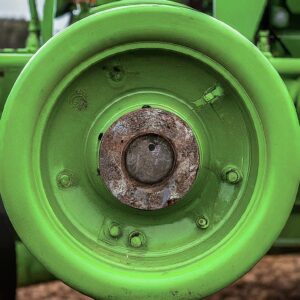
Users may encounter difficulties with the tractor’s brakes, such as reduced braking efficiency.
Some Common Brake Problems of John Deere are:
- Brake Fade: One of the common issues is brake fade, where the brakes lose their effectiveness over time, especially under heavy use.
- Brake Drag: Another issue is brake drag, where the brakes don’t fully disengage, causing excessive wear and tear on brake components.
- Brake Fluid Leaks: Brake fluid leaks can occur due to damaged seals or brake lines, leading to a loss of braking power.
- Spongy Brakes: Spongy brakes refer to a soft or mushy brake pedal feel, indicating air or moisture in the brake lines.
Causes and Solutions:
- Brake Fade:
-
-
- Cause: Brake fade can result from overheating of brake components due to prolonged and intense usage.
- Solution: Allow brakes to cool down periodically during heavy usage. Consider upgrading to high-performance brake pads or adding cooling systems to prevent overheating.
-
- Brake Drag:
-
-
- Cause: Brake drag often occurs due to misadjusted brake calipers or worn-out brake pads.
- Solution: Regularly inspect and adjust brake calipers for proper clearance. Replace worn brake pads and lubricate caliper pins to ensure smooth operation.
-
- Brake Fluid Leaks:
-
-
- Cause: Brake fluid leaks may stem from damaged seals, corroded brake lines, or loose fittings.
- Solution: Inspect brake lines, fittings, and seals regularly for signs of wear or damage. Replace any damaged components and ensure proper tightening of fittings.
-
- Spongy Brakes:
-
- Cause: Spongy brakes are often caused by air or moisture in the brake lines, leading to decreased hydraulic pressure.
- Solution: Bleed the brake system to remove air or moisture. Inspect brake lines for any leaks and repair or replace them as necessary. Use high-quality brake fluid recommended by John Deere.
7. John Deere 5075e PTO (Power Take-Off) Problems:
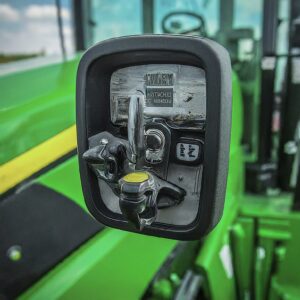
If you’re experiencing issues with the PTO (Power Take-Off) on your John Deere 5075E tractor, it can be frustrating. The PTO is essential for powering various implements and attachments, so any problems can disrupt your work.
One common problem with the PTO is it not engaging properly. This could be due to several reasons:
- Clutch Adjustment: The clutch might need adjustment. If it’s too loose or too tight, it can prevent the PTO from engaging smoothly. You might need to consult the tractor’s manual or a technician to adjust it correctly.
- Hydraulic Pressure: Insufficient hydraulic pressure can also cause PTO problems. Check the levels of hydraulic fluid and make sure there are no leaks in the system. If the pressure is low, it might require servicing or replacing hydraulic components.
- PTO Shaft Issues: Sometimes, the PTO shaft itself can be damaged or worn out. Inspect the shaft for any signs of damage or excessive wear. If it’s broken, you might need to get a new one.
- Electrical Problems: Modern tractors like the John Deere 5075E often have electronic controls for the PTO. Electrical issues such as faulty wiring, connectors, or switches can prevent the PTO from functioning correctly. Check the electrical connections and fuses to ensure everything is in working order.
- Mechanical Faults: There could be mechanical faults within the PTO mechanism itself. Components such as bearings, gears, or shafts may be worn out or damaged, preventing smooth operation. A thorough inspection by a qualified technician can identify and rectify these issues.
- Operator Error: Sometimes, the problem might not lie with the tractor itself but with how it’s being operated. Ensure you’re following the correct procedures for engaging the PTO and using the appropriate RPM (Revolutions Per Minute) settings. Engaging the PTO at too high or too low RPMs can cause it to malfunction.
8. John Deere 5075e Fuel Problems:
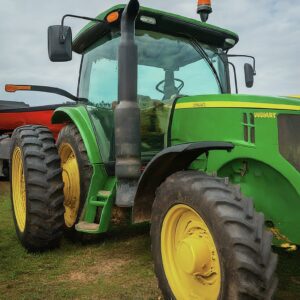
Some farmers may notice decreased fuel efficiency over time.
Contaminated Fuel:
One common issue faced by users is contaminated fuel. Sometimes, dirt, water, or other impurities can find their way into the fuel tank, causing disruptions in the engine’s operation.
Solution: Regularly inspect and clean the fuel tank. Additionally, using fuel filters can help trap impurities before they reach the engine, ensuring smoother operation.
2. Clogged Fuel Filters:
Fuel filters can become clogged over time, especially if the fuel used contains a lot of impurities. This can restrict the flow of fuel to the engine, leading to performance issues.
Solution: Replace fuel filters either when they seem dirty or at the intervals recommended by the manufacturer. This helps maintain proper fuel flow and keeps the engine running smoothly.
3. Air in the Fuel System:
Air bubbles in the fuel lines or fuel system can disrupt the combustion process, causing the engine to sputter or stall unexpectedly.
Solution: Bleed the fuel system to remove any trapped air. This process involves loosening specific valves or fittings to allow air to escape until only fuel flows through the lines.
4. Low-Quality Fuel:
Using low-quality or contaminated fuel can lead to various problems, including reduced engine performance and increased wear and tear on engine components.
Solution: Purchase fuel from reputable sources and ensure it meets the recommended specifications for the John Deere 5075E. Avoid using old or stale fuel, as it can cause issues with combustion and engine operation.
5. Fuel Pump Issues:
In some cases, problems with the fuel pump can cause insufficient fuel delivery to the engine, leading to performance issues or difficulty starting the tractor.
Solution: If the fuel pump is suspected to be faulty, it may need to be inspected and repaired or replaced by a qualified technician.
Conclusion:
By understanding and addressing these eight common John Deere 5075e problems, you can ensure a smoother farming experience. Regular maintenance and timely solutions will keep your tractor running efficiently, allowing you to focus on what you do best – cultivating a successful harvest. Remember, a well-maintained tractor is a reliable partner in your farming journey.








